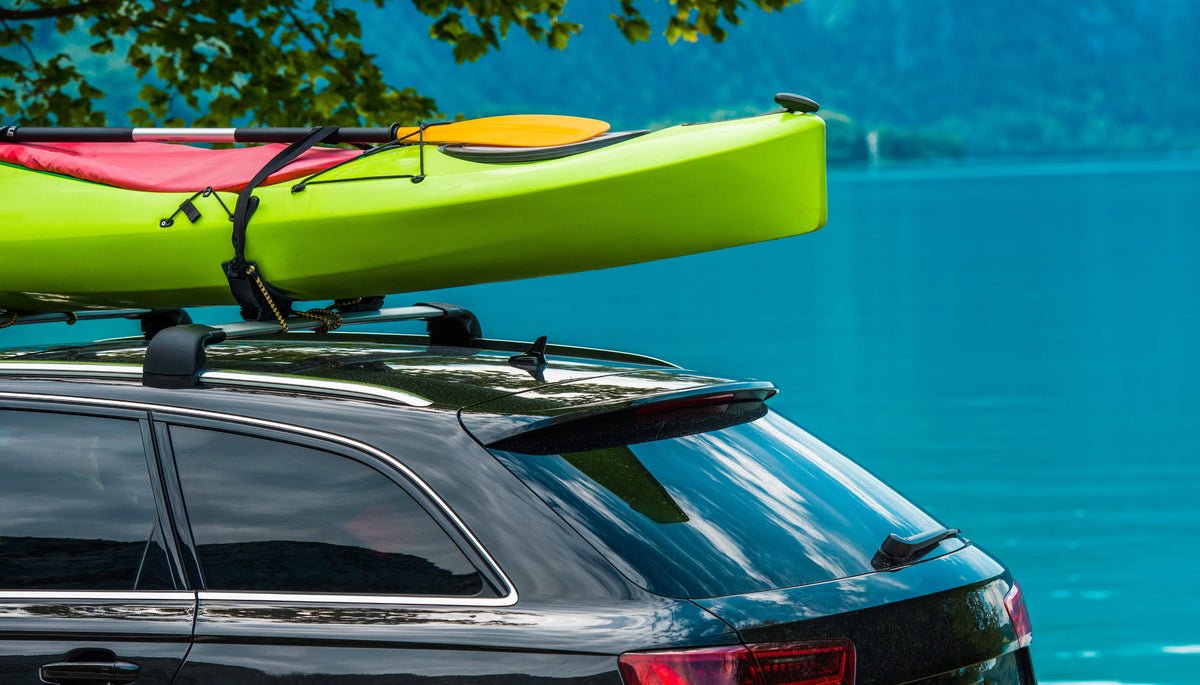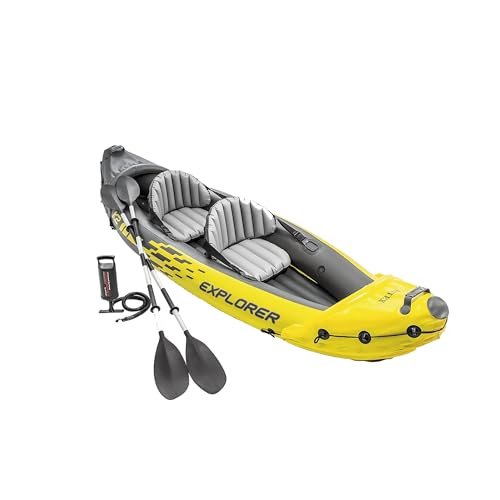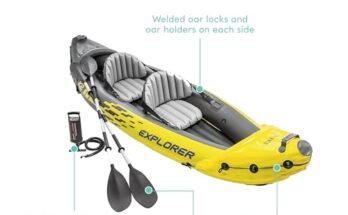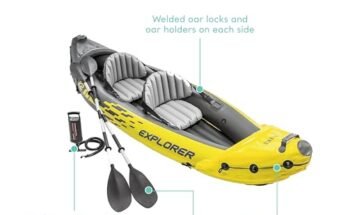If you love kayaking, you know how important it is to get your kayak safely to the water. But loading and securing your kayak on your car roof can feel tricky and stressful.
What if your kayak shifts or scratches your car during the trip? What if you don’t have the right gear or don’t know the best way to use it? This guide will show you exactly how to use a kayak roof rack the right way.
You’ll learn simple steps to keep your kayak stable, protect your vehicle, and make every trip easier. Keep reading, and soon you’ll feel confident loading your kayak like a pro.
Choosing The Right Roof Rack
Using a kayak roof rack makes it easy to carry your kayak safely. Picking the right roof rack helps protect your kayak and vehicle. It also makes loading and unloading easier.
This guide will help you understand the types of roof racks, vehicle compatibility, and weight limits. Knowing these details helps you choose the best rack for your needs.
Types Of Roof Racks
There are different types of roof racks for kayaks. Some attach to factory rails, and others use crossbars. Pick a type that fits your kayak and how often you use it.
- Factory Rails: Built-in rails on some vehicles, easy to use.
- Crossbars: Bars that go across the roof, fit many vehicles.
- Clamp Racks: Attach directly to the door frame, no rails needed.
- Foam Blocks: Simple pads that protect your kayak, best for short trips.
Compatibility With Your Vehicle
Check if the roof rack fits your vehicle type. Some cars have special roofs that need specific racks. Make sure the rack does not block doors or antennas.
Look at your vehicle’s roof shape and size. Some racks fit SUVs, others fit sedans or trucks. Follow the vehicle maker’s rules for roof load limits.
Weight Capacity Considerations
Each roof rack has a weight limit. This includes the kayak and any gear you carry. Do not exceed this limit to avoid damage and keep safety.
- Check your vehicle’s maximum roof load in the manual.
- Consider the weight of your kayak and accessories.
- Choose a rack with a higher weight capacity than your total load.
Preparing Your Kayak
Getting your kayak ready for transport is important. Proper preparation keeps your kayak safe and stable on the roof rack.
This guide covers cleaning, securing loose items, and using protective gear before loading your kayak.
Cleaning And Inspecting
Clean your kayak to remove dirt and debris. Check for cracks or damage that could worsen during transport.
- Wash the kayak with fresh water.
- Use a mild soap if needed.
- Inspect the hull and seams for cracks.
- Check straps and handles for wear.
- Dry the kayak completely to prevent mold.
Securing Loose Items
Loose gear can shift and cause damage. Secure all items before transport to avoid loss or harm.
| Item | How to Secure |
| Paddles | Use paddle clips or straps |
| Seats | Remove or firmly attach |
| Fishing Gear | Store in waterproof bags |
| Coolers | Fasten with bungee cords |
| Personal Items | Place in dry bags inside the kayak |
Using Protective Gear
Protective gear helps prevent scratches and damage to your kayak and vehicle during travel.
- Foam blocks or pads between kayak and roof rack
- Soft straps to avoid scratching the kayak
- Kayak covers to shield from dust and sun
- Edge protectors on sharp parts of the rack
Installing The Roof Rack
Installing a kayak roof rack lets you carry your kayak safely on your car. It is important to set up the rack correctly to avoid damage or accidents.
This guide will help you install the roof rack step-by-step. Follow each part to ensure a good fit and stability.
Step-by-step Setup
Start by unpacking all the parts of your roof rack. Check the instructions from the manufacturer before you begin.
Place the rack on the car roof where it fits best. Most racks come with clamps or straps to hold them tight.
- Position the crossbars evenly on the roof rails
- Use clamps or bolts to secure the rack to the rails
- Tighten all screws and bolts firmly but do not over-tighten
- Attach any padding or supports that protect your kayak
Ensuring Proper Fit
The roof rack must fit your car’s roof rails or gutters well. If it is loose, it can move or fall off during driving.
Measure the distance between your roof rails before buying or installing. Adjust the rack parts to match these measurements.
- Check rack width matches your car roof width
- Make sure clamps fit tightly around rails
- Confirm there is no wobble when you push the rack
Checking Stability
After installation, check the rack’s stability before loading your kayak. A loose rack is unsafe for travel.
Try to move the rack by hand. It should feel solid and not shift or shake.
- Pull and push the rack to test for movement
- Check all bolts and straps are tight
- Inspect padding and supports for secure attachment
- Re-tighten if you find any loose parts
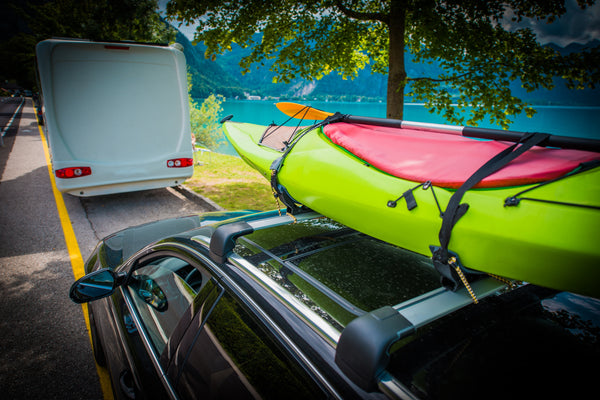
Loading The Kayak Safely
Loading your kayak safely on a roof rack is important for a secure trip. Proper loading protects your kayak and vehicle from damage.
Follow these tips to position, secure, and balance your kayak correctly on the roof rack.
Positioning The Kayak
Place the kayak upside down on the rack to protect the cockpit. Center it evenly from side to side. Make sure the kayak is stable and does not rock.
Keep the kayak’s weight near the center of the roof rack bars. Avoid letting the kayak hang too far over the front or back of the vehicle.
Using Straps And Tie-downs
Use strong straps to secure the kayak tightly to the roof rack. Avoid using bungee cords as they can stretch and fail.
- Place straps over the kayak near the front and back ends.
- Tighten straps so the kayak cannot move side to side or front to back.
- Attach bow and stern tie-downs to the front and rear of the vehicle for extra security.
- Check all straps for wear and tear before each trip.
Balancing Weight Distribution
| Area | Weight Placement |
| Front | Light, avoid too much weight to keep steering stable |
| Center | Heaviest part of kayak should be near the middle bars |
| Rear | Secure but lighter to keep vehicle balanced |
Balance the kayak’s weight to keep the vehicle stable during travel. Uneven weight can cause swaying or loss of control.
Securing For Transport
Transporting a kayak safely on your vehicle requires proper use of a roof rack. Ensuring that the kayak is securely fastened is crucial to prevent accidents or damage during transit.
Follow these guidelines to make sure your kayak is well-secured and stable throughout your journey.
Tightening Straps Correctly
Correctly tightening the straps is essential to keep the kayak in place. Straps should be tight but not so tight that they damage the kayak.
- Use cam buckle straps for a secure hold.
- Wrap the straps around the kayak and roof rack.
- Check that the straps are not twisted.
- Pull the strap end to tighten, ensuring a snug fit.
Preventing Movement
Preventing any movement of the kayak during transport is crucial to avoid shifting or falling. Proper placement and balance can help in achieving stability.
Double Checking Fastenings
Before starting your journey, double-check all fastenings to ensure they are secure. This final check can prevent potential mishaps.
| Check Point | Status |
| Strap Tension | Secure |
| Kayak Position | Centered |
| Rack Stability | Firm |

Driving Tips With Kayak On Roof
Driving with a kayak on your car roof needs care and focus. It can change how your vehicle moves on the road.
Follow these tips to keep safe and protect your kayak during travel.
Adjusting Speed And Handling
Carrying a kayak on the roof changes your car’s balance. Drive slower than usual to keep control.
Take turns gently and avoid sudden moves. This helps stop the kayak from shifting or making the car unstable.
- Reduce speed by 10-15 mph on highways
- Slow down on curves and turns
- Use gentle steering and braking
Avoiding Low Clearances
Kayaks add height to your car. Watch for low bridges, parking garages, and drive-thru clearances.
Measure the total height of your car with the kayak before you travel. Plan routes that avoid low obstacles.
- Check the kayak and roof rack height together
- Look for clearance signs on roads and parking areas
- Choose routes with enough overhead space
Monitoring During Travel
Stop often to check your kayak and roof rack. Make sure the kayak stays tight and nothing is loose.
Listen for unusual sounds while driving. These may mean the kayak is shifting or straps are loose.
- Check straps and mounts every 50 miles
- Look for any damage or wear on gear
- Adjust or tighten straps if needed
Removing And Storing The Kayak
Taking the kayak off the roof rack safely is important for your gear and yourself. Proper cleaning and storage keep your kayak and rack in good shape.
Follow simple steps to unload, clean, and store your kayak and roof rack after use.
Safe Unloading Techniques
Unload your kayak carefully to avoid damage or injury. Ask for help if the kayak is heavy or large.
Always face the kayak toward the vehicle when lifting it off the rack. This gives better control and balance.
- Loosen all straps and tie-downs before lifting
- Lift the kayak with your knees, not your back
- Keep the kayak close to your body while moving
- Place the kayak on soft ground or a padded surface
Cleaning After Transport
Rinse your kayak and roof rack with fresh water to remove dirt and salt. This prevents damage and rust.
Use mild soap and a soft brush for stubborn stains. Avoid harsh chemicals that can harm your gear.
- Check the kayak’s hull for scratches or cracks
- Wipe the roof rack to remove dirt and grime
- Dry all parts thoroughly before storage
Storing Your Kayak And Rack
Store your kayak in a cool, dry place away from direct sunlight. This helps prevent fading and warping.
Keep your roof rack clean and check for loose parts. Store it indoors or cover it to protect from weather.
- Use wall racks or ceiling mounts to save space
- Place padding between kayaks if storing multiple
- Loosen straps and hardware on the roof rack
- Inspect gear regularly for wear and tear
Maintenance And Safety Checks
Using a kayak roof rack helps transport your kayak safely. Regular checks keep your roof rack in good condition.
Maintenance ensures the roof rack functions well and keeps your kayak secure. Follow these tips for safety and maintenance.
Regular Roof Rack Inspections
Inspect your roof rack regularly to ensure it is secure. Check for loose bolts and worn straps.
Look for rust or damage on metal parts. Ensure the rack is tightly attached to the car.
- Check bolts for tightness
- Inspect straps for wear and tear
- Look for rust on metal parts
Replacing Worn Parts
Replace any parts that show signs of wear. Worn parts can fail and cause accidents.
Keep spare parts handy for quick replacements. Use parts recommended by the rack manufacturer.
- Replace worn straps immediately
- Keep spare bolts and screws
- Follow manufacturer guidelines
Safety Gear Recommendations
Use safety gear when loading and unloading your kayak. Safety gear helps prevent injuries.
Consider gloves for better grip and non-slip shoes. A step stool can help reach the roof easily.
- Wear gloves for better grip
- Use non-slip shoes
- Consider a step stool

Frequently Asked Questions
How Do I Install A Kayak Roof Rack?
To install a kayak roof rack, first check your vehicle’s roof type. Attach the rack securely using the provided hardware. Follow manufacturer instructions carefully. Ensure the rack is stable before loading your kayak for safe transportation.
What Are The Best Straps For Kayak Roof Racks?
Use cam buckle or ratchet straps made from durable nylon. These straps hold kayaks tightly and resist slipping. Avoid thin or weak straps to prevent damage or accidents during travel. Proper straps ensure your kayak stays secure on the roof rack.
How Do I Secure My Kayak On The Roof Rack?
Place the kayak centered on the rack. Use at least two strong straps to tie it down. Tighten the straps to prevent movement but avoid over-tightening. Secure bow and stern lines for extra stability during transit.
Can I Install A Kayak Roof Rack On Any Car?
Most cars with roof rails or crossbars can support a kayak roof rack. Some vehicles without these may need aftermarket crossbars. Always verify compatibility with your car model and rack system before purchase or installation.
Conclusion
Using a kayak roof rack makes transporting your kayak safe and easy. Secure the kayak tightly to avoid damage or accidents. Check all straps and locks before driving. Take your time to load and unload carefully. Regularly inspect the rack for wear and tear.
Enjoy your trips without worrying about your gear. A good roof rack saves effort and protects your kayak. Simple steps lead to smooth adventures on the water.
